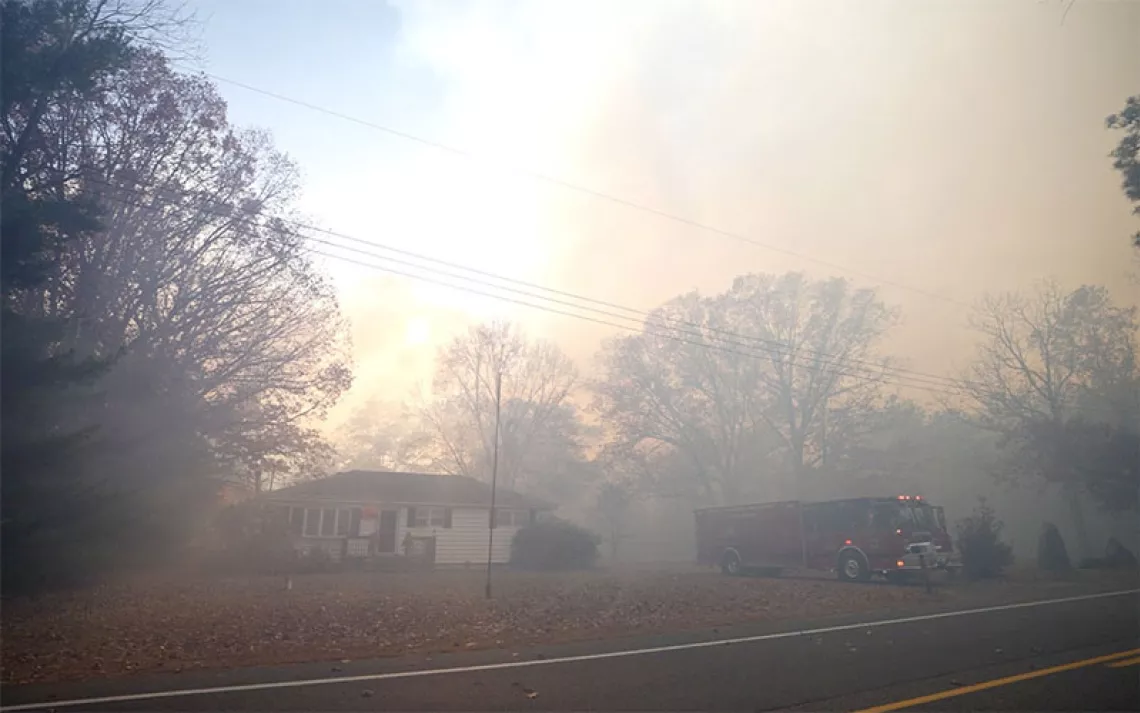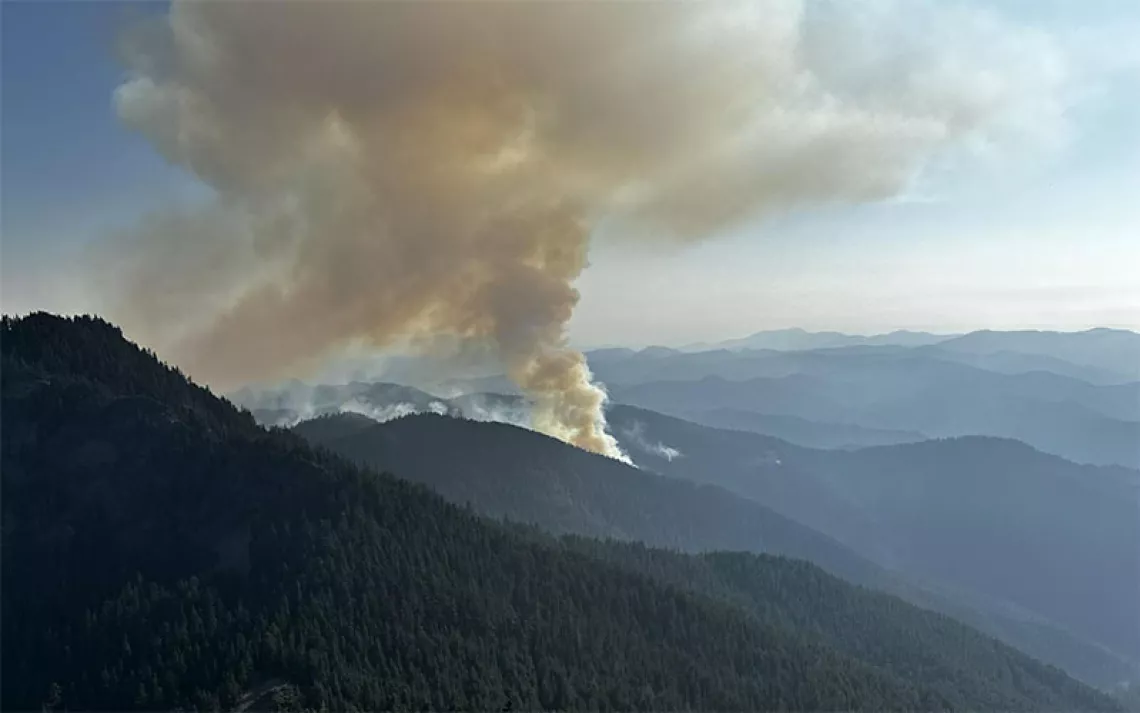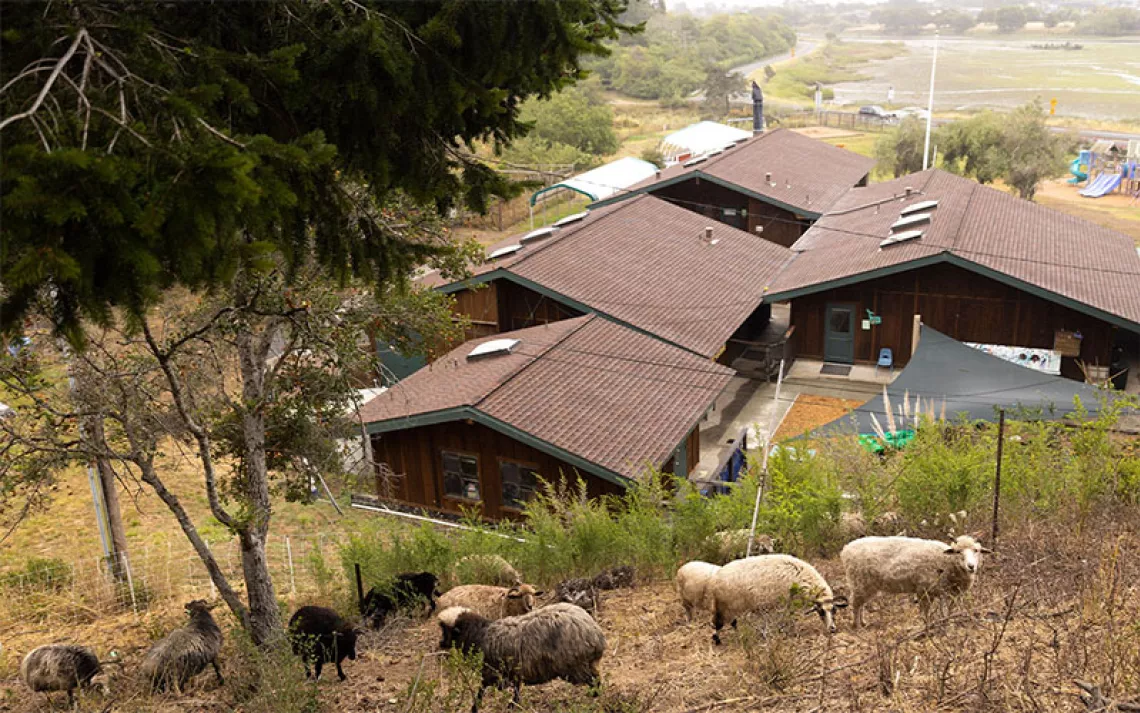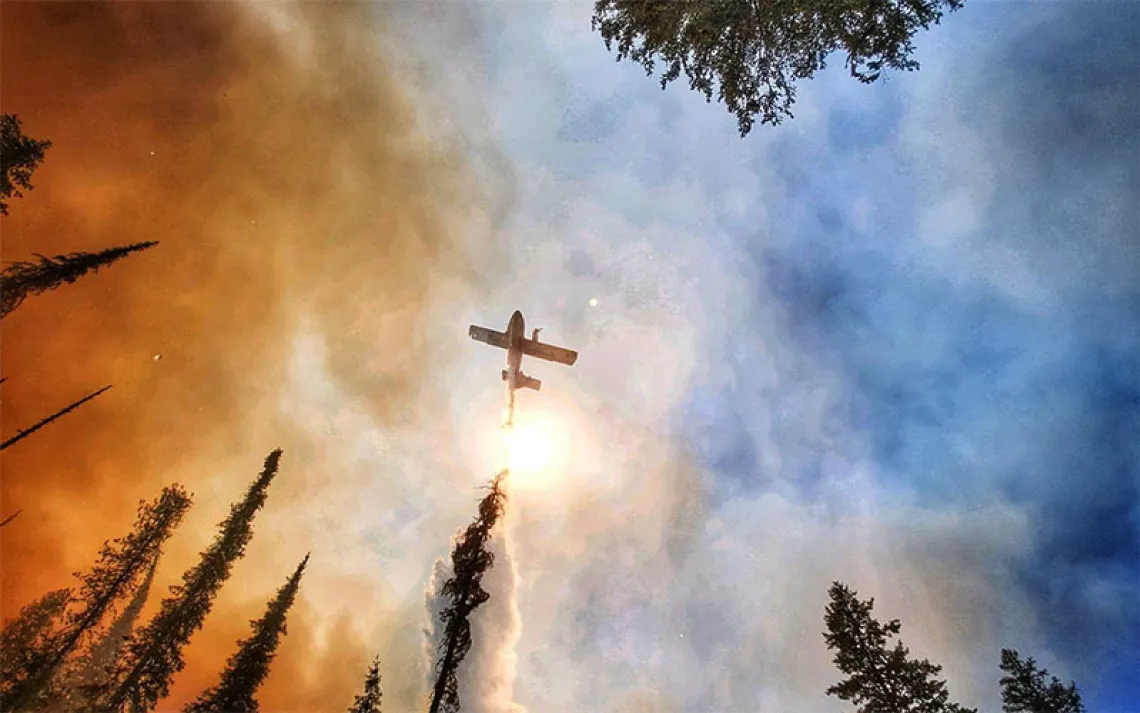Climate-Driven Wildfires Are Exposing Millions to Dirty Air
Over 137 million people live with unhealthy air, according to the American Lung Association

Smoke from the Bond Fire near Irvine Lake in Orange County, California, on December 3, 2020. | Photo by AP Photo/Noah Berger
During the early months of the pandemic in 2020, shelter-in-place orders forced millions across the country to curb their cars. With traffic all but disappearing, and polluting tailpipes along with it, an unexpected experiment got underway on a grand scale: What would happen to air pollution if drivers in the nation’s biggest cities suddenly gave up their cars and stopped commuting?
Turns out not much, according to the new American Lung Association 2022 State of the Air report. And climate-driven wildfire is a big reason why.
Between 2018 and 2020, more than four in 10 Americans, or over 137 million people, lived in counties with unhealthy levels of ozone or particle pollution. During those three years, 9 million more people were impacted by spikes of short-term high particle pollution than during the previous three-year period, according to State of the Air. All told, 47 counties in eight states—home to 34 million people—saw a total of 116 days of unhealthy Code Purple days than were recorded in last year’s report, and 26 counties across six western states saw hazardous, or Code Purple–level, air quality.
What’s behind these big spikes in air pollution?
“It’s primarily wildfire,” Paul Billings, the national senior vice president for public policy at the American Lung Association, told Sierra. “We’re seeing the impact of wildfires particularly in the West, and that’s why more people are being exposed to these deadly high particle pollution days. The conditions around climate change that create drought and heat and that create the conditions for wildfire have devastating health consequences, in addition to the loss of life and property associated with individual fires. Clearly wildfires are impacting the health of people, whether they live nearby or hundreds or thousands of miles away.”
Breathing dirty air can mean more coughing, wheezing, and shortness of breath for healthy adults, and more serious consequences for pregnant women and for those with chronic diseases such as asthma, chronic obstructive pulmonary disease, and cardiovascular disease. Air pollution has been linked to stroke, childhood leukemia, and premature death, among other serious conditions. According to State of the Air, 2.3 million children and 10 million adults suffering from asthma live in counties that scored an F for at least one of the three primary pollutants studied: short-term or daily spikes in particle pollution; annual particle pollution, also known as soot; and ozone, also known as smog. Over 66,000 people diagnosed with lung cancer in 2018 live in a county that received a failing grade.
The areas of the United States most polluted with dirty air reads like a who’s who of Western states, where drought and dry conditions have stoked some of the worst wildfires ever recorded. Meanwhile, these same regions continue to see some of the worst polluted air from traditional sources such as transportation, agriculture, and oil and gas extraction. California cities top nearly every Top 5 or Top 10 list. Fresno-Madera-Hanford, California, jumped to the top of the list of cities most polluted for daily short-term particle pollution, followed by Bakersfield, California (#2), San Jose–San Francisco–Oakland (#4), and Redding–Red Bluff (#5). More than 63 million Americans live in a county that received a failing grade for spikes in daily particle pollution.
For annual particle pollution, Bakersfield, again topped the list, followed by Fresno-Madera-Hanford, California (#2), Visalia, California (#3), San Jose–San Francisco–Oakland (#4), and Los Angeles–Long Beach (#5).
Los Angeles once again scored the worst for smog. For 22 of the 23 years the American Lung Association has released the State of the Air report, LA has consistently been ranked as the worst city for smog pollution. In the year 2020—California's worst wildfire season on record to date—Los Angeles recorded of one of its worst-ever years for ozone. Exposure to ozone can lead to a variety of health problems including asthma, wheezing, and shortness of breath.
Ironically, California continues to be at the vanguard of measures intended to clean up dirty air. The state continues to push forward with regulations and investment to reduce pollution. This month, the California Air Resources Board advanced a plan to transition to zero emissions vehicles for all light duty vehicles by 2035. But the state faces unique challenges when it comes to air pollution: millions of cars on the road, emissions from oil and gas extraction, as well as a unique topography that makes the state vulnerable to dirty air such as basin and mountain terrain that traps air pollution.
Climate-driven drought and wildfire is only making these conditions worse. The state’s worst-ever wildfire season on record was in 2020, one of the three years studied in the latest State of the Air report.
As in previous reports, State of the Air continues to show that people of color bear a disproportionate burden of air pollution. A person of color is 61 percent was more likely than a white person to live in a county with a failing grade for at least one pollutant, and 3.6 times more likely to live in a county with a failing grade for all three pollutants.
There was some good news for communities outside of the West. Pittsburgh, for example, achieved a passing grade for annual particle pollution for the first time. And some cities moved off the 25 worst-polluted cities list, including Milwaukee, Philadelphia, Hartford, and the Washington, DC, metropolitan area.
Residents can look up the state of their own air by typing in their zip code at stateoftheair.org.
The American Lung Association has released a State of the Air report every year since 2020. During that time, consecutive reports have shown an overall downward trend in air pollution as the United States has taken numerous steps to clean up point sources of dirty air, such as cleaning up power plants or deploying zero emission technology for vehicles.
But climate change is tanking those gains. In response, the American Lung Association is calling for stronger national particle pollution and ozone standards.
“Were it not for climate change, we believe we would see an overall downward trend in dirty air,” Billings said. “Short-term particle pollution driven by wildfire is at some of the highest levels we’ve ever seen. Climate change is a health emergency, and the State of the Air documents the air quality impacts of that health emergency on people in the United States.”
 The Magazine of The Sierra Club
The Magazine of The Sierra Club



